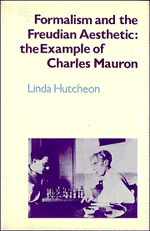Summary
AS A LITERARY CRITIC, Charles Mauron is a figure whose value as an index to the major literary theoretical issues debated in our century equals, and indeed exceeds, his value as the inventor of psychocritique. His literary critical career began in the 1920s in England under the auspices of E. M. Forster, Roger Fry, and the Hogarth Press of Virginia and Leonard Woolf – a fact that the French have generally ignored, concentrating instead on his post–1950 formalization of the psychocritical method. However, in the mid-1960s, Mauron became embroiled in the nowfamous Picard–Doubrovsky battle over the “nouvelle critique,” that is, over the importation of the frameworks from the social sciences into French literary criticism. For a brief time Mauron was alternately admired and condemned for the so-called rigor of his particular literary methodology derived from psychoanalysis. Today his work tends to be either ignored as out of fashion in France or rewritten – not without considerable distortion – in Lacanian terms.
Yet, before his rather late conversion (at the age of fifty or so) to Freudian psychology, Mauron was an aesthetician and one of a particularly British sort.
- Type
- Chapter
- Information
- Formalism and the Freudian AestheticThe Example of Charles Mauron, pp. 1 - 14Publisher: Cambridge University PressPrint publication year: 1984



